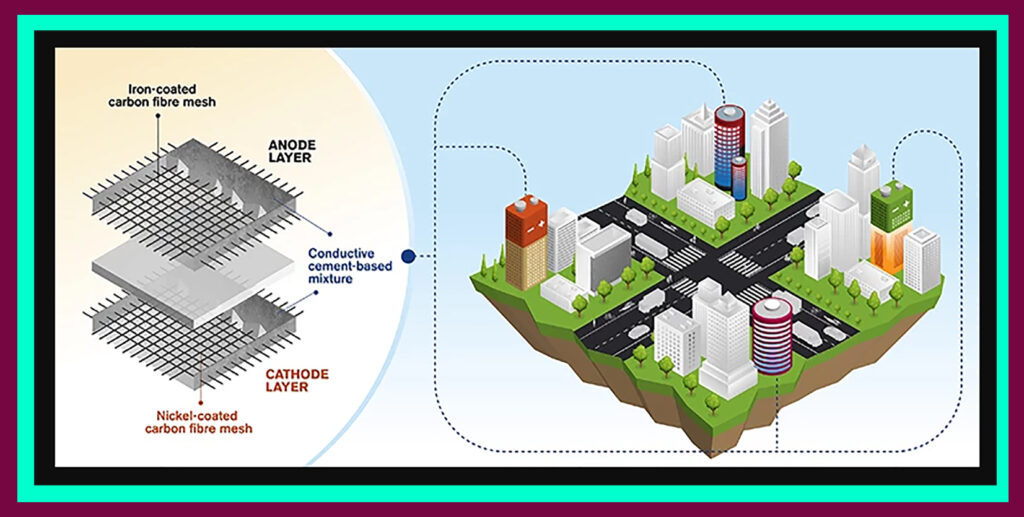Scientists in Sweden conducted battery research that focused on making batteries store energy and double as structural components for buildings. The team demonstrated a novel cement-based battery that could see large structures built from functional concrete.
The research was executed at the Chalmers University of Technology, where scientists were developing more sustainable building materials, focusing on concrete, the world’s most widely-used, energy-intensive material.
This innovative concept builds on previous designs for concrete-based batteries, which the scientists claim performed poorly in testing. After much experimentation, they developed the rechargeable design, described as a world-first concept, and it looks promising.
The team’s battery starts with a cement-based mixture, similar to regular concrete, but one spiked with low amounts of short carbon fibers to add flexural strength and conductivity. In addition, incorporated into the mix are two carbon fiber meshes, one coated in nickel to act as the battery’s cathode and the other covered in iron to serve as the anode. Performing as the battery’s electrodes, these transport electrons back and forward as the device is charged and discharged.
According to the team, the concrete-based battery saw an energy density of 7Wh per square meter of material, which could prove over 10-fold greater than previous concrete-based batteries. However, it’s still far lower than commercial batteries, but since it’s made from concrete, which can be scaled up to form enormous structures, it could counter its limited capacity.

The team envisions all kinds of different uses for their novel battery design, including:
- To allow buildings to double as energy storage devices
- Power LEDs
- Provide 4G connections in remote areas
- Be paired with solar panels to power sensors built into concrete structures, like along bridges or highways
Emma Zhang, an author of the study, said:
We have a vision that in the future, this technology could allow for whole sections of multi-story buildings made of functional concrete. Considering that any concrete surface could have a layer of this electrode embedded, we are talking about enormous volumes of functional concrete.
However, the team points out that the research is still in its early stages, with several technical problems to overcome. Some of these include the battery’s lifespan, as concrete structures are made to last decades or more. With technologies improving as we advance into the future, the performance of concrete is becoming more enhanced, and its life extended. For example, earlier this year, scientists at the Worcester Polytechnic Institute developed self-healing concrete that consumes CO2 to repair its own cracks.
This means the scientists will need to figure out how to make the battery last as long or come up with a way to extract and replace them once they wear out. Regardless, they are optimistic about the possibilities.
The findings were published on March 9, 2021, in the journal Buildings.
Source: https://www.intelligentliving.co/innovative-concrete-based-battery/














